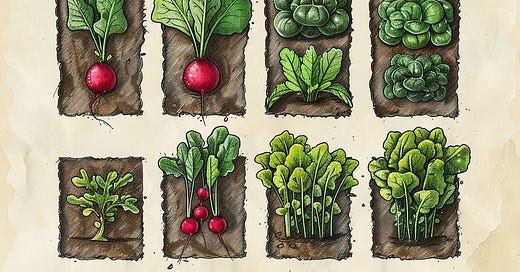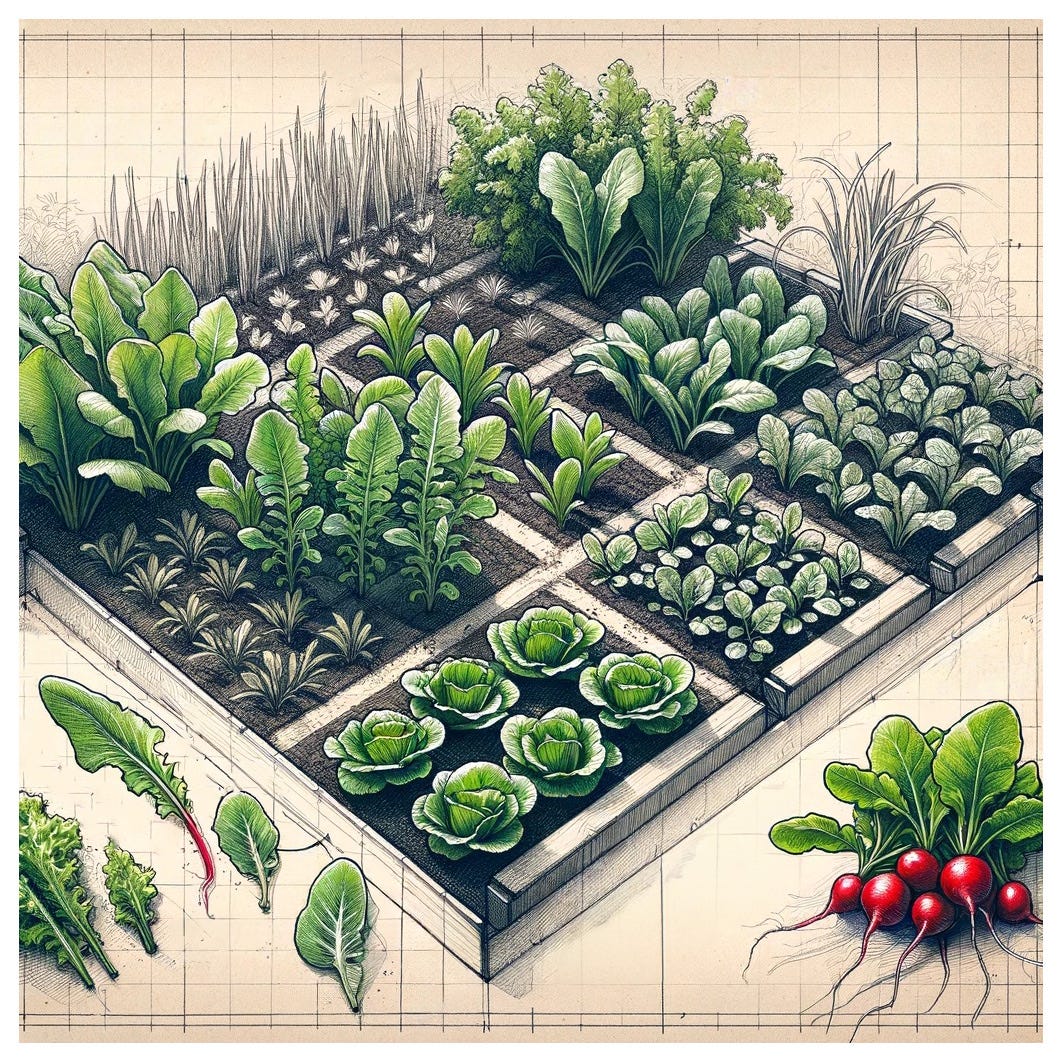NAPA VALLEY, Calif. — The term “shoulder season” sometimes refers to in-between times at resorts, when neither winter sports nor summer activities are available. Recently I’ve been thinking that it also applies to late winter and early spring in our vegetable gardens.
Many home garden plots will soon be full to bursting with warmth-loving crops such as tomatoes, squash and beans, but until then the garden space is empty and unproductive. With a little effort, however, you can plant many cool-season vegetables now and harvest them in time to plant the summer veggies, too.
Vegetable crops grow at different rates. Seed packets, seed catalogs and nursery tags usually list the “days to maturity” for a given crop. It is worth noting that the days to maturity are based upon ideal growing conditions. Actual harvest dates will vary. Also, some maturity dates refer to the number of days after transplanting, not from the date of seeding. When you are considering whether you have enough time to grow a particular crop to maturity, they are still a useful guide.
A good time to plant tomatoes in the ground is mid-April, not coincidentally when the Master Gardeners have their Tomato Festival and sale. The space where you intend to put tomatoes is thus available for the next six weeks or so. Why not plant some arugula, lettuce or radishes there? These can be planted from seed now.
Small red radishes are usually ready to eat about a month after sowing. Arugula and leaf lettuces are fast growers, and you can start harvesting as soon as the plants have some leaves. Create your own baby salad mix with these and other greens such as kale, mustards and chard that you can harvest young.
If your greens are still producing when it is time to set out tomato seedlings, just remove enough of the greens to make room for the relatively small tomato plants. You can continue to harvest the rest of the greens until the tomatoes overwhelm them.
By mid-May your soil will be warm enough to plant all kinds of beans, squash, cucumbers and peppers. To take advantage of the weeks until then, how about growing something in that space that needs a little more time to mature? Asian vegetables such as baby bok choy, tat soi and gai lan (aka Chinese broccoli) take 55 to 60 days to reach maturity, according to their seed packets. Baby beets and baby turnips need roughly the same amount of time.
Because our summer growing season is long, approximately mid-April to mid-November (based upon first and last frost dates), you can delay planting some heat-loving vegetables like beans, cucumbers and summer squash until June or even later to allow more time for growing cool-season vegetables.
Peas and carrots planted from seed now will produce by May or June. You can also expect transplants of broccoli, cauliflower and cabbages to be finished by June, leaving space for the warm-season crops. Nurseries and garden centers should have a good variety of these brassica vegetables for sale now if you did not start your own plants six weeks ago.
The secret to success is knowing which crops thrive in the cooler parts of the year and how much time they need to mature. If you take advantage of this “shoulder season” for planting cool-season crops, you might eventually find yourself growing vegetables year-round.
Library Talk: UC Master Gardeners of Napa County and Napa Library will host a talk on Thursday, March 7, on “Agaves — More Than Tequila and Century Plants” from 7 to 8 p.m. via Zoom. Learn more about adding these deer-proof, beautiful and low-maintenance plants to your garden. Register here to receive the free Zoom link.
Workshop: Join UC Master Gardeners of Napa County for “Spring Into Summer Vegetable Garden” on Saturday, March 9, from 10 a.m. to noon at the University of California Cooperative Extension office, 1710 Soscol Ave., Napa. Plan your vegetable growing for the warm weather ahead. Topics include soil prep, fertilizing, managing pests, irrigation and planting schedules. This is a hands-on workshop, and registration is required. This workshop repeats on Saturday, March 17, from 2 to 4 p.m. at the Yountville Community Center, 6516 Washington St., Yountville. To register, contact the Yountville Parks and Recreation Department.
Help Desk: The Master Gardener Help Desk is available to answer your garden questions on Mondays and Fridays from 10 a.m. until 1 p.m. at the University of California Cooperative Extension Office, 1710 Soscol Ave., Suite 4, Napa. Or send your questions to mastergardeners@countyofnapa.org. Include your name, address, phone number and a brief description. For best results attach a photo.
Pat Hitchcock is a UC Master Gardener of Napa County.







good article, I planted my broccoli in November from seedlings I started and have heads now. Which I eat in the garden